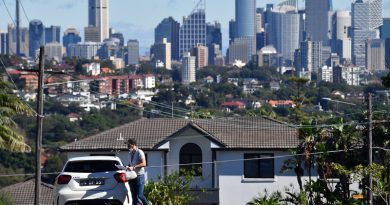Will 95% mortgage scheme give generation rent a foot in the door?
Government support for homebuyers with a small deposit has prompted a flurry of enticing offers. But buyers should go in with their eyes wide open
It was billed as a way to give prospective homeowners access to the housing market. When the chancellor Rishi Sunak announced a mortgage guarantee scheme to encourage banks and building societies to lend to people who can only afford a 5% home deposit, he heralded it as a way of turning “generation rent to generation buy”.
The move, launched last week, has prompted a flurry of new mortgage products on to the market, both within and outside the scheme. But buyers have been warned that they may be paying a higher interest rate for the new loans than if they would if they had a bigger deposit.
And then there is the concern that the guarantee may prompt increases in house prices, leaving future generations having to borrow even more. Or they could drop and plunge people into negative equity.
Others have welcomed the new scheme. “The launch of various 95% options for borrowers is hugely positive and will help many people who could otherwise not have been able to get on to the housing ladder,” says Mark Harris, chief executive of mortgage broker SPF Private Clients.
A new market
When the pandemic hit, mortgage providers, fearing for the economic repercussions from Covid-19, largely pulled deals where buyers needed a deposit of just 5%. In March last year, there were 378 mortgage products available, according to financial information site Moneyfacts, but these largely disappeared.
Last month, Sunak announced the scheme whereby the government would guarantee the 95% loans. Under this scheme, the government guarantees a portion of the mortgage if the borrower goes into default.
The news alone was enough to encourage some lenders to return to the market – in March Yorkshire building society started offering a 95% deal without using the government guarantee. Last week, lenders using the guarantee started to launch products, most of which are on fixed terms of two years.
Figures from Moneyfacts show the best value offering as a Halifax two-year fixed mortgage at 3.73%, with an arrangement fee of £999.
Outside the scheme, Barclays’s Springboard five-year fixed mortgage offers 3.45% interest, although it requires a guarantor.
The best five-year fix without a guarantor is 3.89% from Coventry building society and Metro Bank (both outside the scheme).
The rates on the new tranche of 95% products are typically higher than for loans where the buyer has a bigger deposit. Rachel Springall of Moneyfacts says it is important to seek financial advice as some of the deals under the new scheme may not be the best fit.
“It continues to be the case that if borrowers can afford to stretch their deposit to 10% they will find many more deals at lower rates, but, understandably, this may not be an option for some,” she says.
“There is clearly much more room for improvement in choice for borrowers with just a 5% deposit, but it’s likely to be a slow and steady process before we start to see product volumes at the levels seen before many lenders withdrew them in 2020.”
Under the scheme, borrowers can’t have an interest in any other property. While the maximum property purchase is capped at £600,000, meaning a maximum loan of £570,000, some lenders have capped the mortgage offer at £500,000.
Value, not the price
Borrowers should be aware that when a lender offers a 95% mortgage, they are doing so on the lender’s valuation, not the price.
Sara Williams, author of the Debt Camel blog, says your deposit may not end up being enough to buy the home you want.
“Say you have an offer of £160,000 accepted on a house, 5% of that is £8,000, so if you have £10,000 saved for a deposit you may think that’s plenty,” she says. “But if the lender’s survey produces a valuation of £155,000, they will only lend 95% of that lower amount, which is £147,250. That leaves you having to find £12,750, ie, £160,000 minus £147,250.”
Questions have also arisen over how affordable it will be to buy a house, even with the new scheme in place. Analysis by the Guardian found single buyers in their 30s, on the UK median wage, will still be locked out of buying in about half of the local authority areas in England and Wales.
Coupled with this are fears that the new scheme will result in a rise in house prices, according to Williams. “There is a real risk that the government backing for 95% mortgages will simply increase house prices.
“For the people that can now afford to buy, that may not matter. But it may mean that first-time buyers in a couple of years are looking at needing even larger deposits and larger mortgages,” she says.
Future threats
What the government scheme does not protect against is negative equity, when the property becomes worth less than the mortgage that has been taken out on it.
With a 95% mortgage, just a small fall in the value of the home could mean that you are in negative equity. This can result in difficulty moving home or getting another fixed-interest deal when the one that you are on ends.
“Being trapped by negative equity in a house that is too small can be very difficult,” says Williams. “So if this is a starter house and you expect to have to move in a few years because of a growing family, this could be a real problem.”
Source: Read Full Article

